How to MS Outlook Delegate Access
Microsoft Exchange and Outlook allow you to grant another person, known as a delegate, to receive and respond to meeting requests or to send e-mail messages on your behalf. You can also grant additional permissions that allow your delegate to read, create, or have full control over items in your Exchange mailbox.
Delegates will have the ability to send mail on your behalf, and respond to meeting invites. You should understand the level of access you are granting.
This is due to our current implementation of Exchange and we will continue to work toward obtaining this feature in the future.
Adding Delegate Permissions
Outlook (Windows)
- Open the Microsoft Outlook application
- Click the “File” menu in the top left corner of the Outlook window. Under the “Info” tab, click on “Account Settings” then select “Delegate Access“.
- The “Delegates” window will appear. Click “Add” to add a delegate to your account.
- Use the “Search” field to find the user you’d like to add as a delegate. If you are searching by NetID, make sure to check the “More Columns” option. Select the user you wish to add as a delegate from the search results, then click the “Add” button. Click “OK” to continue.
- The “Delegate Permissions” window is where you configure the specific permissions your delegate will have.
- Delegate permissions can be set for Calendar, Tasks, Inbox, Contacts, and Notes. Most delegates will only need Calendar access.NOTE:
Granting access to your inbox will allow your delegate to read your email messages.
- There are four Delegate permissions levels: Editor, Author, Reviewer, and None. We recommend using default Editor permission. If you think your circumstances require a different configuration, please contact the UVM Tech Team so we can discuss the proper setup.
- If your delegate will be managing your calendar for you, you’ll want to check the “Delegate receives copies of meeting-related messages sent to me” checkbox. This checkbox will send your meeting request to the delegate. The delegate can then decide to accept, decline, or ask for the meeting to be scheduled at a different time on your behalf.
- Delegate permissions can be set for Calendar, Tasks, Inbox, Contacts, and Notes. Most delegates will only need Calendar access.
- Once you’ve added a delegate to your account, you’ll be able to choose how you would like to handle your meeting related emails. We recommend sending meeting invites to your delegate, but also choosing to receive a copy yourself.
That’s it. You’ve successfully granted Delegate Permissions to another user.
Outlook (macOS)
- Open the Microsoft Outlook application
- Click the “Outlook” menu in the top left corner of your screen, then click on “Preferences“. From the preferences window, click on “Accounts“.
- From the “Accounts” window, select your UVM Exchange account in the left column, then click the “Advanced” button.
- Select the “Delegates” tab, then click the + symbol to add a delegate to your account.
- Use the “Search” field to find the user you’d like to add as a delegate. Select the user you wish to add as a delegate from the search results, then click the “Add” button.
- The “Delegate Permissions” window is where you configure the specific permissions your delegate will have.
- Delegate permissions can be set for Calendar, Tasks, Inbox, Contacts, and Notes. Most delegates will only need Calendar access.NOTE:
Granting access to your inbox will allow your delegate to read your email messages.
- There are four delegate permissions levels: Editor, Author, Reviewer, and None. We recommend using default Editor permission. If you think your circumstances require a different configuration, please contact the UVM Tech Team so we can discuss the proper setup.
- If your delegate will be managing your calendar for you, you’ll want to check the “Delegate receives copies of meeting-related messages sent to me” checkbox. This checkbox will send your meeting request to the delegate. The delegate can then decide to accept, decline, or ask for the meeting to be scheduled at a different time on your behalf.
- Delegate permissions can be set for Calendar, Tasks, Inbox, Contacts, and Notes. Most delegates will only need Calendar access.
- Once you’ve added a delegate to your account, you’ll be able to choose how you would like to handle your meeting related emails. We recommend sending meeting invites to your delegate, but choosing to receive a copy. Choose the option that makes the most sense for your use case.
That’s it. You’ve successfully granted Delegate Permissions to another user.
Outlook for Web
- Login to https://mail.uvm.edu
- Switch to the “Calendar” view, then click on the “Share” button. Select the calendar you wish to grant delegate permissions to. (Your default calendar is named “Calendar”).
- Enter the name of the user you wish to grant delegate rights to in the “Share with:” field. In this example our delegate will be “Joe Shmoe”. Once you’ve added your delegate(s), use the permissions dropdown and select the “Delegate” option. Click “Send” to send to save these permission settings.
- After delegating your calendar to someone, you must also specify permissions for how your meeting requests and response messages will be handled. Right-click on the calendar for which you assigned a delegate, then select “Permissions“.
- This will bring up the permissions window. Select your desired behavior for “Send invitations and responses to:”
- Delegate only. Send me notifications (Default) – this option will send your meeting invitation emails to your delegate, you will only receive a notification of meeting requests and response.
- Delegate only – Only your delegate will receive meeting requests and notifications.
- Both my delegate and me – both you and your delegate will receive meeting requests and notifications. (Not recommended)
- Click “Save” to save your changes.
That’s it. You’ve successfully granted Delegate Permissions to another user.
Opening a Delegate Account
Outlook (Windows)
- Open the Outlook application, then click File.
- Select Account Settings > Account Settings…
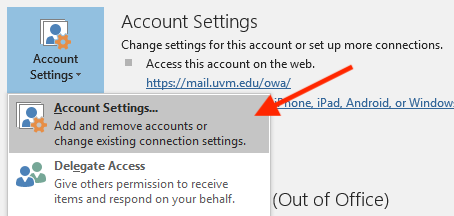
- Click Change…

- Click More Settings …

- Select the Advanced tab, make sure the Download shared folders checkbox is NOT checked, then click Add…
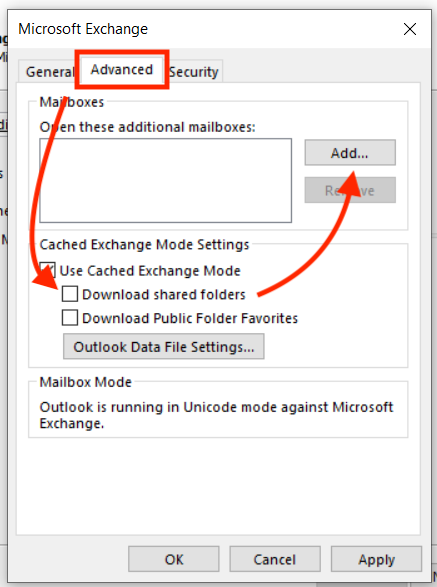
- Type in the email address for the account you have delegate access to, click OK,then Apply.

Outlook (macOS)
- Open the Outlook application.
- Select Tools > Accounts… and select your UVM email account. (It will already be selected if it is your only account.)

- Click Advanced…

- Select the Delegates tab then click the + below Open these additional mailboxes:

- Type in the email address for the account you have delegate access to, then click Add.
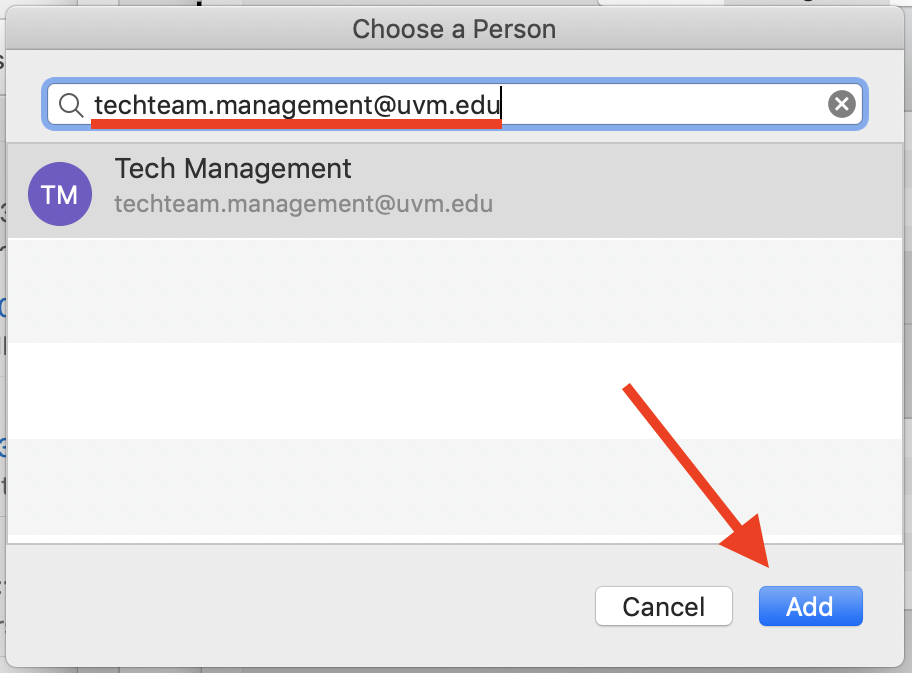
- Click OK.
Outlook for Web
- Open Outlook for Web and switch to Calendar view.
- Right click Your calendars on the left sidebar on the page, then select Open calendar.

- Type in the email address for the shared mailbox, select it from the results, then click Add.

Removing Delegate Permissions
Outlook (Windows)
- Open the Microsoft Outlook application.
- Click the “File” menu in the top left corner of the Outlook window. Under the “Info” tab, click on “Account Settings” then select “Delegate Access“.
- The “Delegates” window will appear. Click on the delegate you wish to remove, click “Remove“, then “OK“.
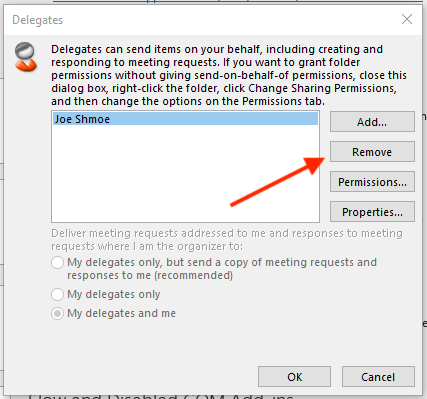
The delegate should now be removed.
Outlook (macOS)
- Open the Microsoft Outlook application
- Click the “Outlook” menu in the top left corner of your screen, then click on “Preferences“. From the preferences window, click on “Accounts“.
- From the “Accounts” window, select your UVM Exchange account in the left column, then click the “Advanced” button.
- Select the “Delegates” tab, click the delegate you wish to remove, then click the – symbol to remove the delegate from your account.
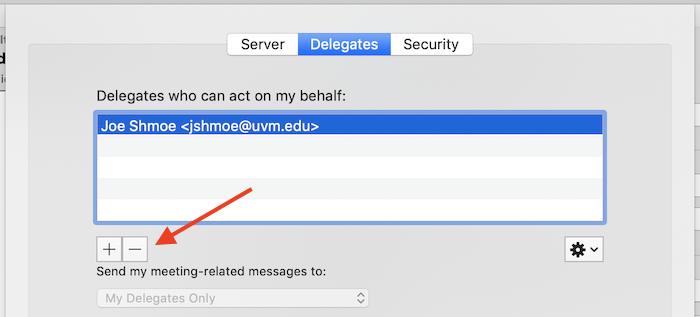
The delegate should now be removed.
Outlook for Web
- Login to https://mail.uvm.edu
- Switch to the “Calendar” view, then right-click on the calendar you wish to remove a delegate from, then select “Permissions“.
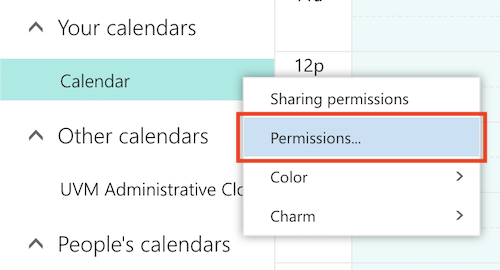
- This will bring up the permissions window. Click the
symbol next to the delegate you wish to remove.

- Click “Save” to save your changes. The delegate should now be removed.
Additional Permissions
Outlook allows the use of Categories and color coding for organization purposes. This can be especially useful for your calendar. Unfortunately, a normal delegate will not be able to fully utilize this system without additional permissions being granted.
- You must have Owner permissions granted to create or delete categories in another user’s folder.
- You cannot rename categories in another user’s folder regardless of permission level due the the way outlook handles that operation. Ask the user to rename it for you.
,,,,


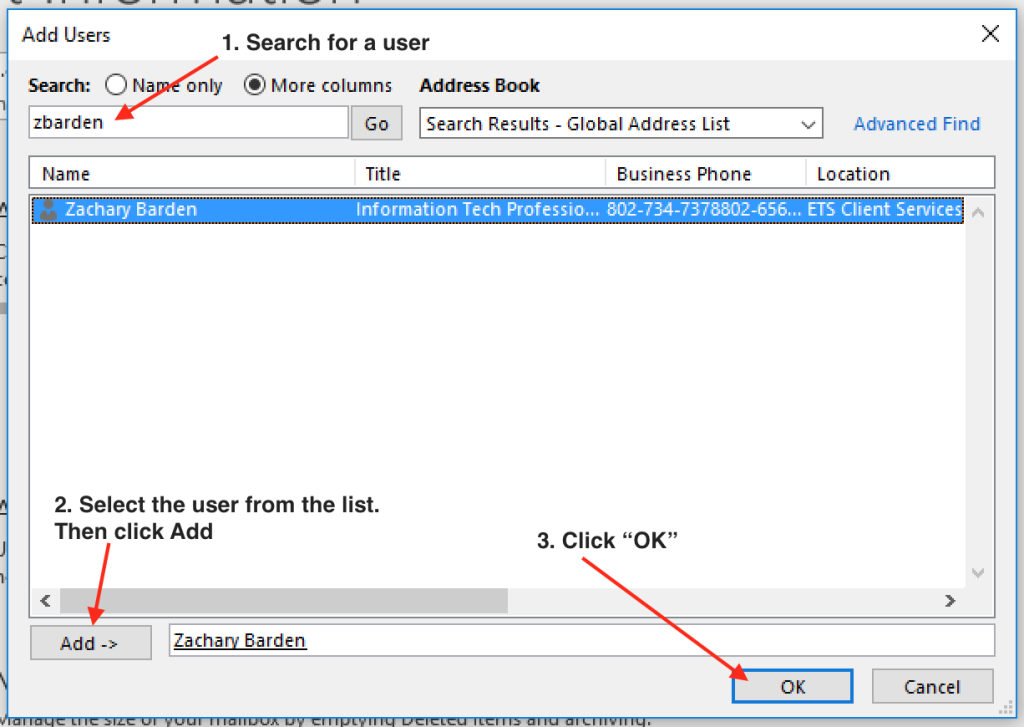


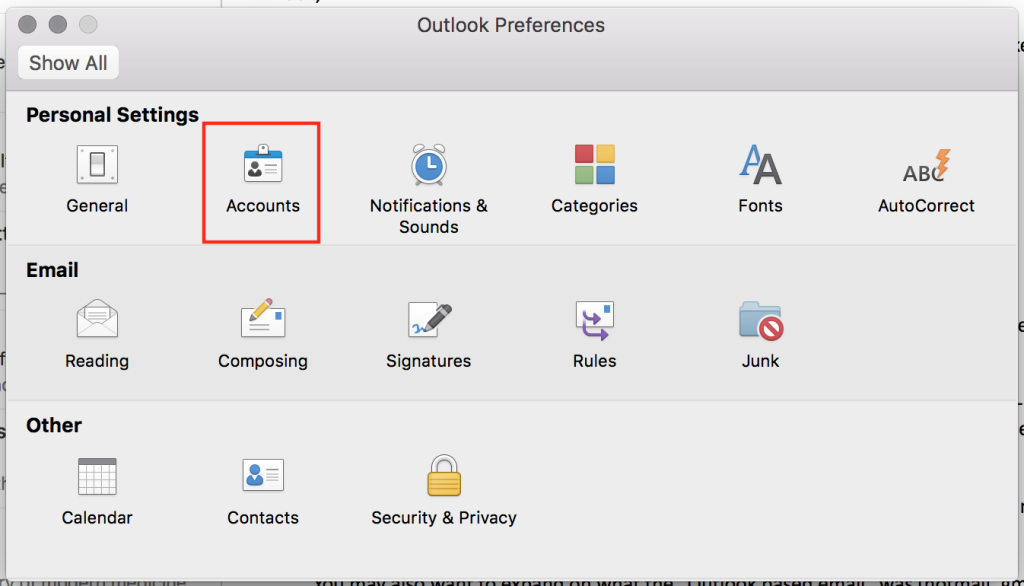
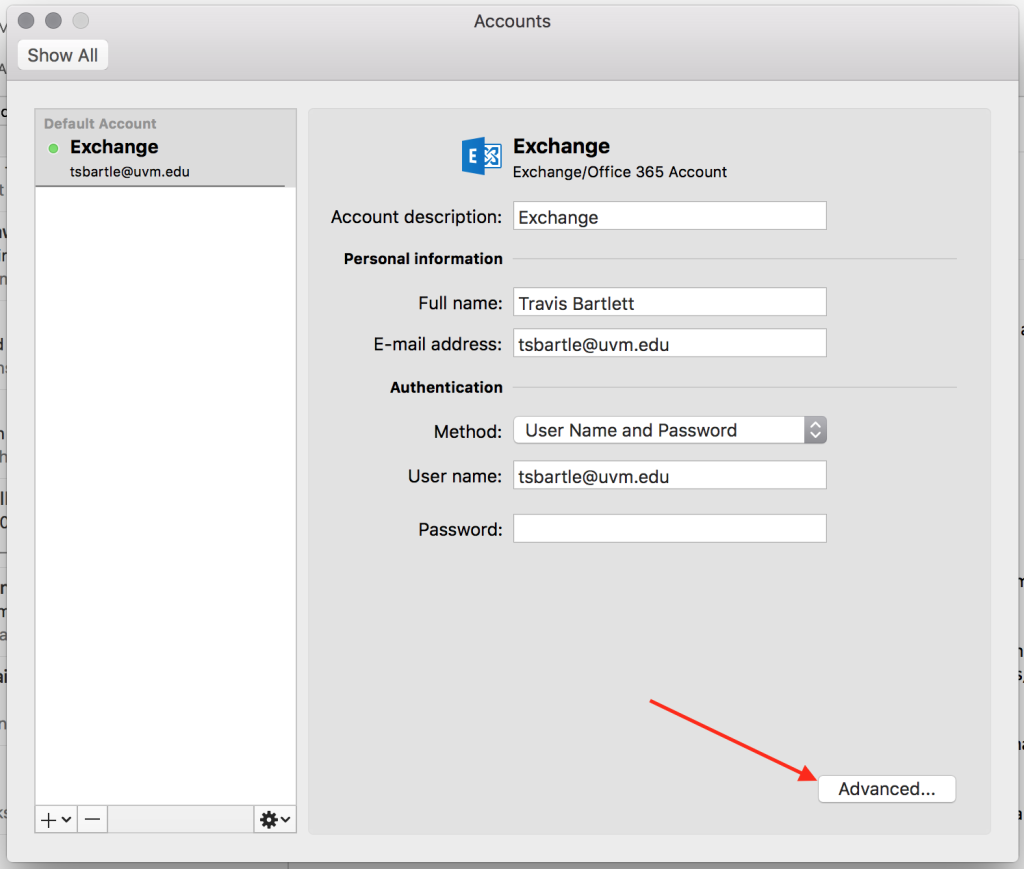
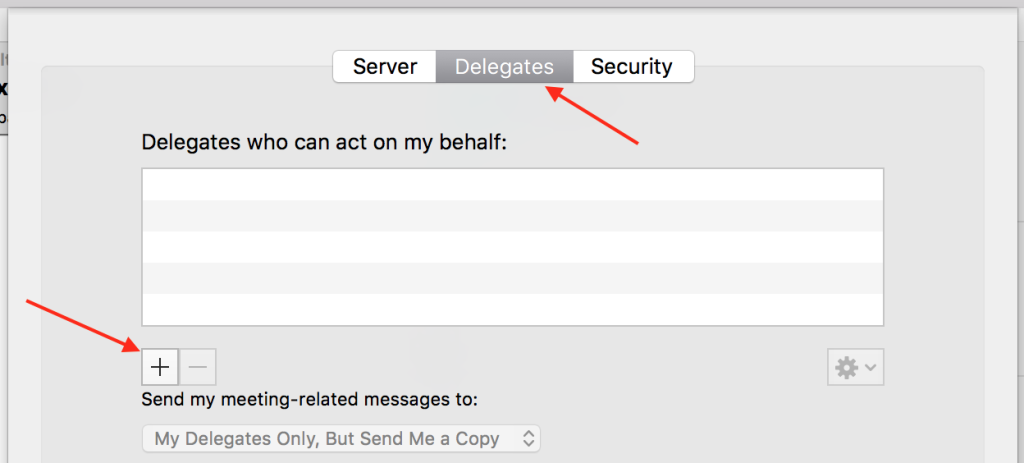


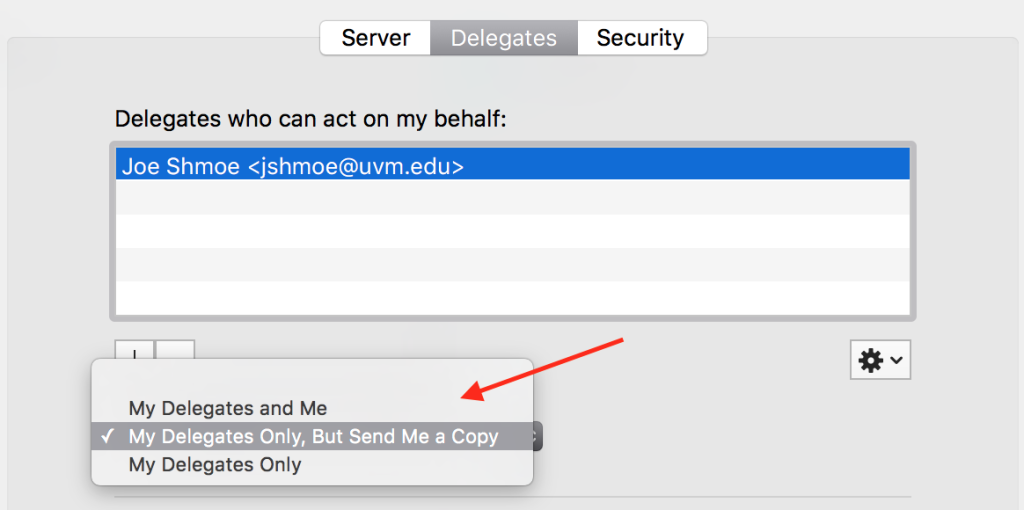

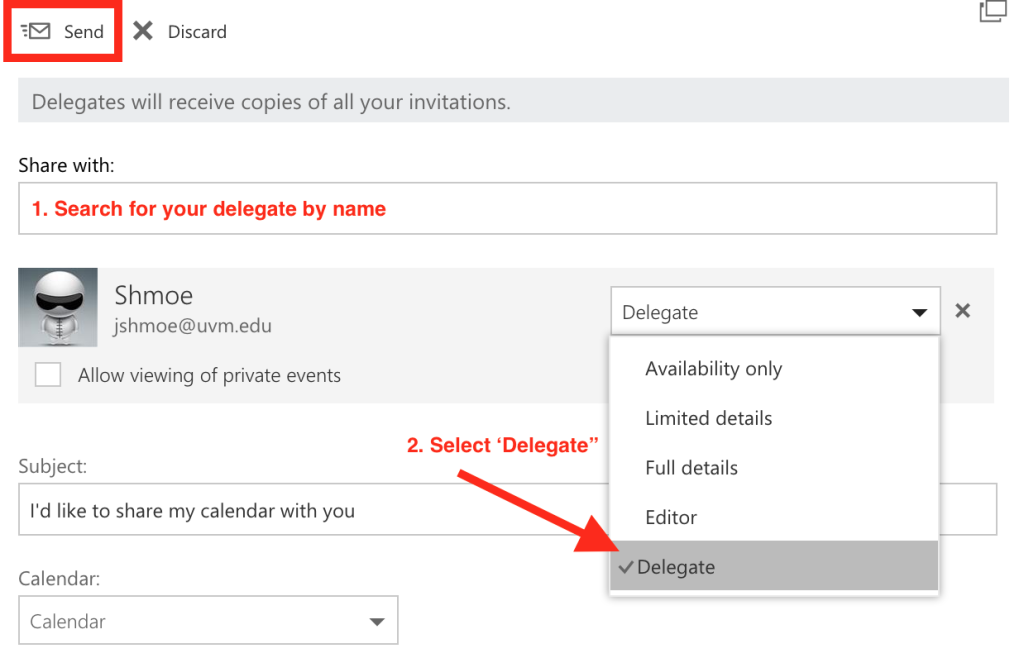

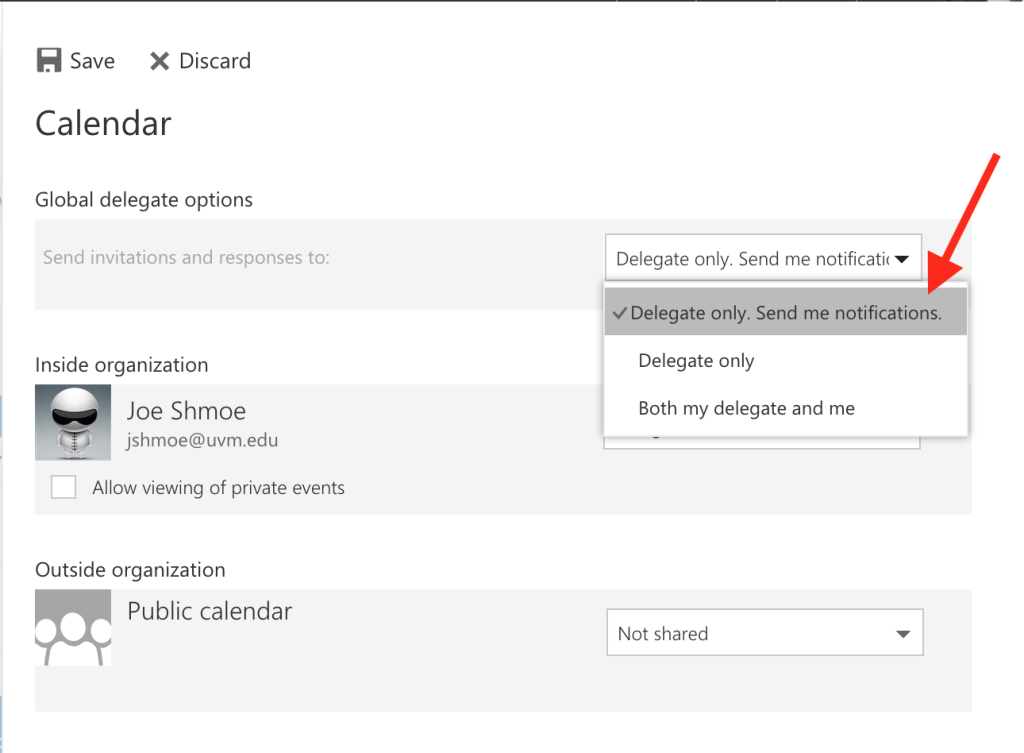
No comments:
Post a Comment